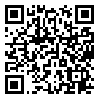Volume 12, Issue 2 (9-2022)
2022, 12(2): 133-147 |
Back to browse issues page
Download citation:
BibTeX | RIS | EndNote | Medlars | ProCite | Reference Manager | RefWorks
Send citation to:



BibTeX | RIS | EndNote | Medlars | ProCite | Reference Manager | RefWorks
Send citation to:
Khorsandi A, Hemmat A, Mireei S A, Ehsanzadeh P, Amirfattahi R. Determination of Leaf Relative Water Content of Two Genotypes of Sesame Using Visible and Near- Infrared (VIS/NIR) Spectrometry to Detect Drought Stress. Journal of Crop Production and Processing 2022; 12 (2) :133-147
URL: http://jcpp.iut.ac.ir/article-1-3168-en.html
URL: http://jcpp.iut.ac.ir/article-1-3168-en.html
Isfahan University of Technology , ahemmat@iut.ac.ir
Abstract: (3030 Views)
Relative water content (RWC) in plants is one of the most important biochemical parameters and its deficiency limits efficiency of photosynthesis and crop productivity. The scientific reports on using spectroscopy in detecting drought stress for sesame plants are very rare. In this study, the possibility of identifying water stress in two sensitive (Naz-Takshakhe) and resistant (Yekta) genotypes by predicting the RWC in sesame plants under water-stressed conditions using spectral indices was investigated. The developed spectral indices in the form of the ratio/difference of the reflectance derived from the leaf diffuse reflectance spectra, limited to the Visible-Near Infrared (Vis/NIR) region (400–1100 nm), were used. One hundred and fifty pots from each of the two genotypes were randomly divided into three equal groups. Pots were irrigated at soil water potential of −0.1 MPa (well-watered), −1.0 MPa (moderate-water stressed), and −1.5 MPa (severe-water stressed). The Vis/NIR spectra were then obtained from the leaves of each pot. Leaf RWC was also measured. In most cases, linear relationships between the RWC and the means of the three band reflectance spectra including: green (520 to 565 nm), red (580-760 nm) and near-infrared (760 to 900 nm), as well as normalized difference vegetation indices (NDVIs), and spectral ratios (SRs) extracted from the reflectance spectra were obtained. The results showed that the mean reflection of the red zone with the coefficients of determination of 0.80 and 0.78 and RMSE of 4.58 and 2.51, NDVI3 with the coefficients of determination of 0.80 and 0.79 and RMSE of 3.84 and 2.51, and also, SR with the coefficients of determination of 0.84 and 0.76 and RMSE of 3.40 and 2.66 for both “Yekta” and “Naz-Takshakhe” genotypes, respectively, provided the best results for predicting the RWC of the leaves. Therefore, the Vis/NIR spectroscopy is a fast, somewhat accurate and non-destructive method for detecting sesame water conditions. Under water-stressed conditions, more severe changes in the RWC of the “Yekta” genotype compared to “Naz-Takshakhe”, led to better performance of the reflectance spectral indices in estimating the RWC of the leaf in this genotype. The presented results can lead to the development of a reliable and portable tool for rapid and non-destructive detection of RWC of the sesame leaves.
Keywords: Normalized Difference Vegetation Index (NDVI), Simple Ratio (SR), Water stress, Vis/NIR Spectroscopy, Diffuse Reflectance spectrum
Send email to the article author
| Rights and permissions | |
 | This work is licensed under a Creative Commons Attribution-NonCommercial 4.0 International License. |







